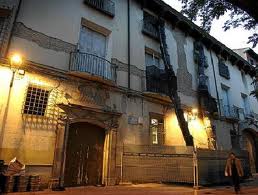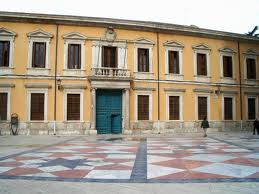Neoclassical architecture came along as part of the Enlightenment movement in the 18th century. It was championed by the Bourgeois class and aimed to move away from highly decorative elements that characterised Baroque architecture. Returning again to pure and logical design, it was heavily influenced by the ideals of ancient Rome and Greece. Simplicity, symmetry and the use of clean lines, geometric shapes and balance were used to focus on function rather than ornate decoration.

Here's a list of some Neoclassical buildings in Zaragoza.
Casa Tarín o Casa del Canal Imperial
Pza de Santa Cruz, 19
Diputación Provincial
Plaza de España
Fuente de los Incrédulos
Vía Ibérica
Iglesia de San Fernando de Torrero
Vía de San Fernando, s/n
Iglesia Parroquial de Nuestra Señora de Altabás
C/ Sobrarbe, 10

Palacio Arzobispal
Pza de la Seo, 5
Palacio de la Familia Palafox
C/ Palafox, 4
Palacio de los Condes de Sobradiel o de Gabarda
Pza del Justicia, 2
Puerta del Carmen
Pº Pamplona / Avda. César Augusto
Moderniste architecture began in Cataluña in the 19th century and was a simplification of style. It was also connected to the Enlightenment and the Industrial Revolution, which was spreading throughout Europe at the time. Although not extremely ornate, it was still quite aesthetic. Modernisme made much use of organic forms from the world of nature, such as designs of animals, fruits, leaves and flowers. New technologies and building materials were used as well, including iron, steel, concrete and glass. Casa Molins and Casino Mercantil are two of the best examples of Moderniste Architecture in Zaragoza.
Juncosa house
Sagasta Avenue, 11

Mercantile casino
Coso, 29
Molins house
Alfonso Street, 2
Prudencio street building
Prudencio Street, 25
Quiosco de la Música
Parque Primo de Rivera
Retuerta house
Sagasta Avenue, 13